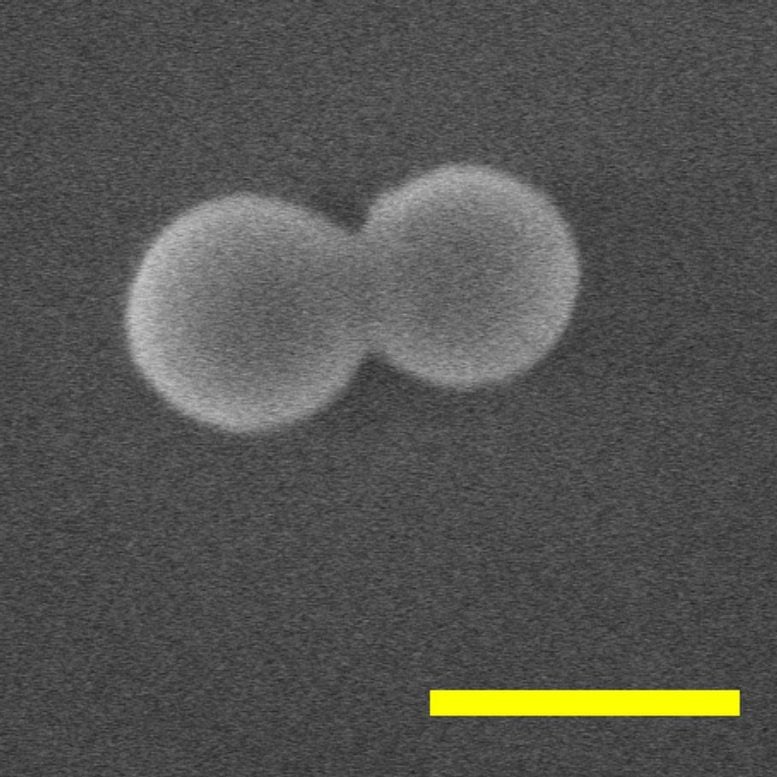A dumbbell-shaped nanoparticle powered just by the force and torque of light has become the world’s fastest-spinning object. Scientists at Purdue University created the object, which revolves at 300 billion revolutions per minute. Or, put another way, half a million times faster than a dentist’s drill. In addition, the silica nanoparticle can serve as the world’s most sensitive torque detector, which researchers hope will be used to measure the friction created by quantum effects. The research was published this week in Nature Nanotechnology. The researchers levitated the object in a vacuum using light in the form of a laser, and then used a second laser with a polarizing plate to alternate the optical torque on the object in order to test its torque detection sensitivity. “It’s always exciting to set a world record,” said Tongcang Li, assistant professor of physics and astronomy, and assistant professor of electrical and computer engineering. In 2018, Li and his colleagues had set the previous world record for the fastest-spinning object with a similar device that was one-fifth as fast. Hearing that the nanoparticle is powered by light could lead one to mistakenly think that the particle contains some sort of solar-powered capability. In fact, light itself exerts a minuscule, but measurable, amount of force on nearly any object. You may not be able to feel it physically (only emotionally perhaps), but the light from those fluorescent lights in your office is literally and constantly pressing down on you because of something known as light radiation pressure. It’s a force millions of times weaker than the gravity on you, but it is still there. In space, light can even propel satellites using light sails. “In the 1600s Johannes Kepler saw that the tails of comets always pointed away from the sun because of radiation pressure,” Li says. “We use the same thing, but with concentrated lasers, to levitate and rotate the nanoparticles.” In addition to the new track record in terms of rotation speed, the nanoparticles can measure torque at levels 600–700 times more sensitive than any device before. Li says this nano-torque detector will be used to measure and investigate quantum effects such as vacuum friction. It’s theorized that even objects in a vacuum levitated by light experience some very minuscule level of drag caused by virtual photons, a quantum fluctuation in a vacuum that is limited by the uncertainty principle. The nano-torque detector could also be used to measure related effects, including the Casimir effect and nanoscale magnetism, which could eventually allow engineers to develop and control nanoelectronic devices. Reference: “Ultrasensitive torque detection with an optically levitated nanorotor” by Jonghoon Ahn, Zhujing Xu, Jaehoon Bang, Peng Ju, Xingyu Gao and Tongcang Li, 13 January 2020, Nature Nanotechnology.DOI: 10.1038/s41565-019-0605-9 The research was funded by the Office of Naval Research (grant number N00014-18-2371), the National Science Foundation (grant number PHY-1555035) and the Defense Advance Research Projects Agency (DARPA).
